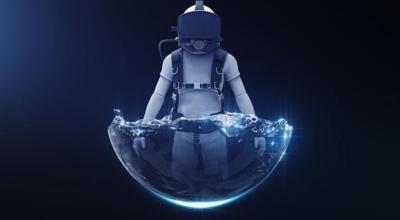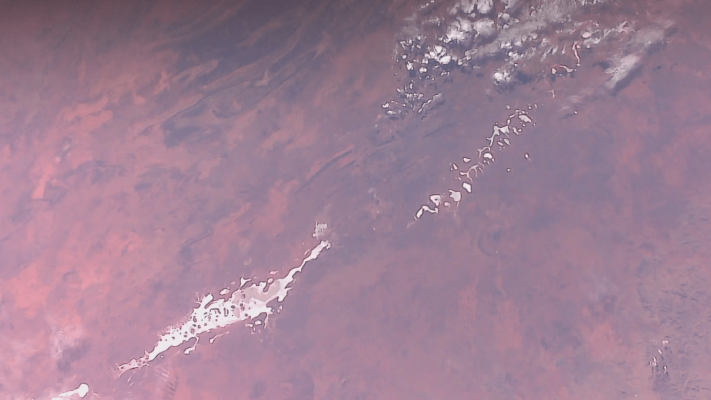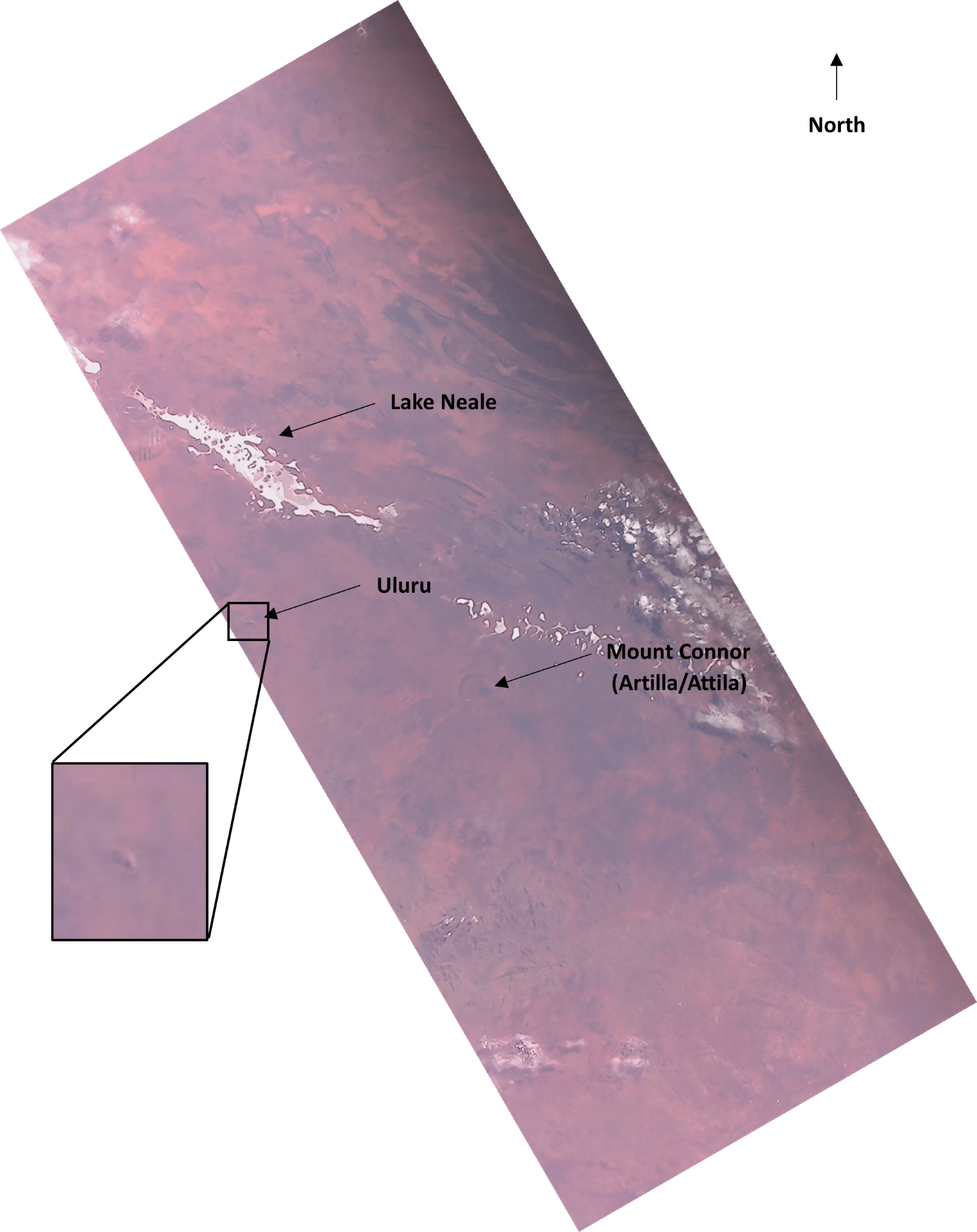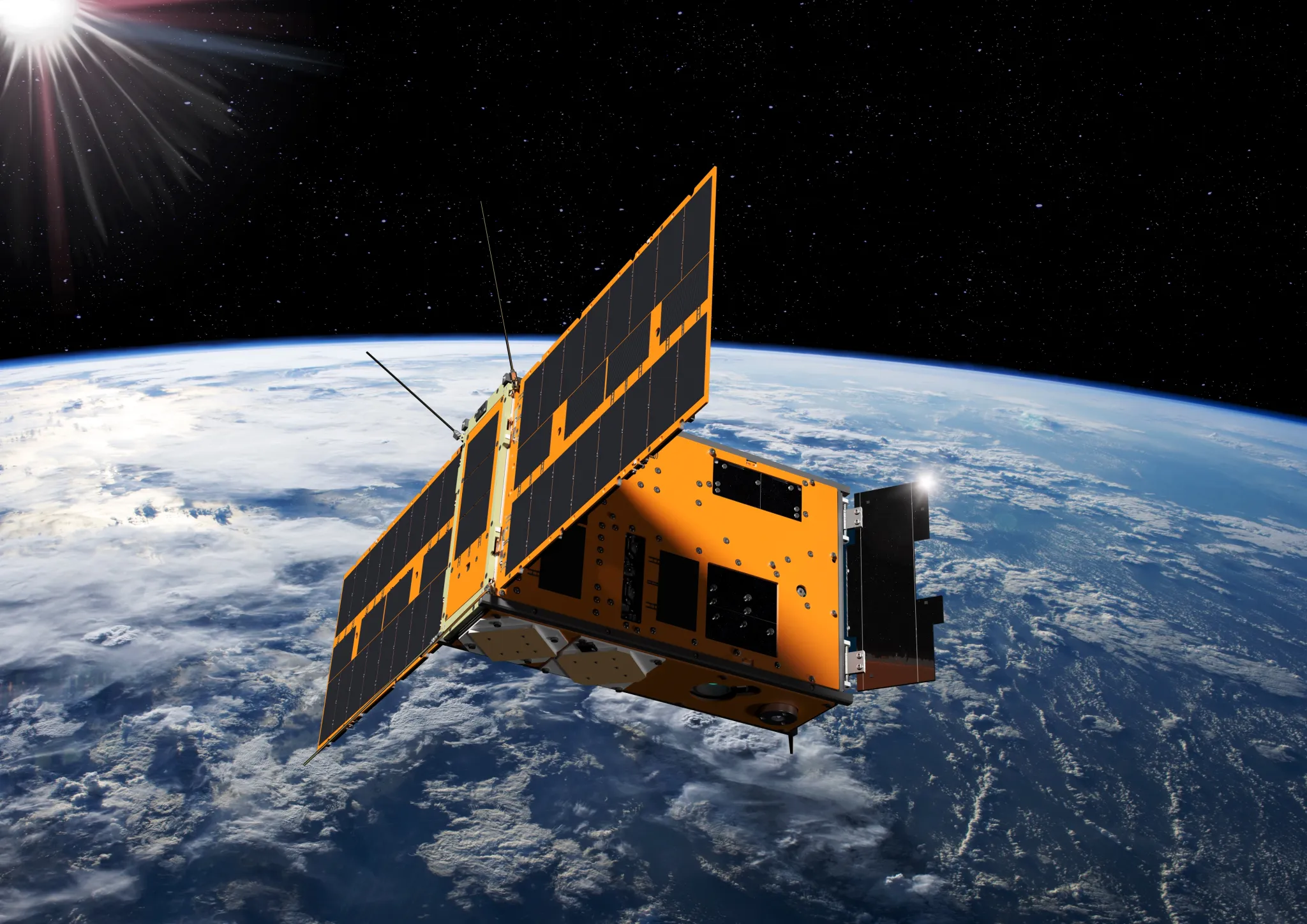An Australian space technology made an out-of-this-world contribution to this year’s National Science Week.
The Space Industry Responsive Intelligent Thermal (SpIRIT) satellite took a novel image of the iconic Uluru from 500km above the Earth.
The University of Melbourne, who released the image, claimed it is the first time that the cultural landmark has been seen from space with a made-in-Australia satellite and camera system.
It was the University’s Loris payload aboard the SpIRIT satellite that captured the below image in which Mount Connor and Lake Neale are also visible.
However, the grainy photo wasn't taken from the spacecraft’s infrared or visible light cameras, but a $50 mobile phone — integrated into the mission to help inspect the satellite.
Fast facts
Fast facts
- SpIRIT is a collaborative industry satellite, supported by the Agency through an investment of almost $7 million.
- It is the first Australian satellite to carry a foreign space agency's payload as its main scientific instrument.
- The shoebox-sized satellite weighs just 11.5 kilograms and was launched in December 2023.
A ground-breaking nanosatellite
SpIRIT was developed by a consortium led by the University of Melbourne and the Italian Space Agency, comprising Inovor Technologies, Neumann Space, SITAEL Australia and Nova Systems, as well as the Italian National Institute of Astrophysics, Fondazione Bruno Kessler, the University of Tuebingen, and their partners for the HERMES payload development.
Over 500km above Earth, the satellite has deployed solar panels and thermal radiators nearly one metre long. The panels are powering scientific instruments, cameras (including a selfie stick), guidance systems, communication antennae, onboard computers with artificial intelligence capabilities, and an electric propulsion system.

Space capabilities with big impact
Explore our range of case studies showcasing projects funded through the Agency's programs that are making waves here at home and across the globe.
Main image credit: University of Melbourne



